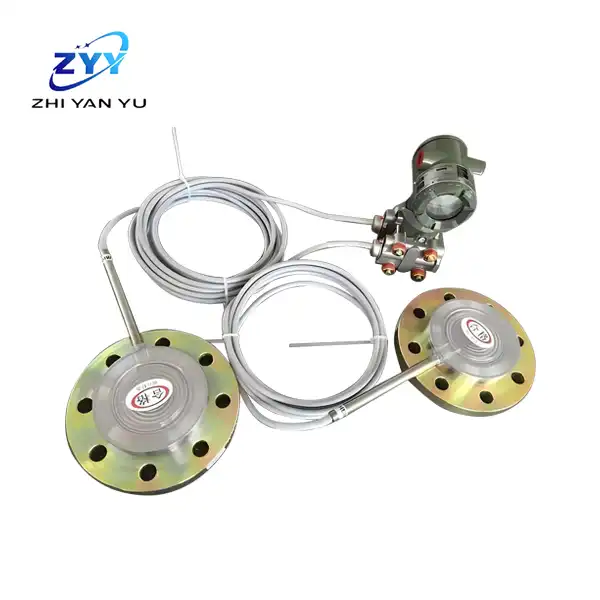- English
- French
- German
- Portuguese
- Spanish
- Russian
- Japanese
- Korean
- Arabic
- Greek
- German
- Turkish
- Italian
- Danish
- Romanian
- Indonesian
- Czech
- Afrikaans
- Swedish
- Polish
- Basque
- Catalan
- Esperanto
- Hindi
- Lao
- Albanian
- Amharic
- Armenian
- Azerbaijani
- Belarusian
- Bengali
- Bosnian
- Bulgarian
- Cebuano
- Chichewa
- Corsican
- Croatian
- Dutch
- Estonian
- Filipino
- Finnish
- Frisian
- Galician
- Georgian
- Gujarati
- Haitian
- Hausa
- Hawaiian
- Hebrew
- Hmong
- Hungarian
- Icelandic
- Igbo
- Javanese
- Kannada
- Kazakh
- Khmer
- Kurdish
- Kyrgyz
- Latin
- Latvian
- Lithuanian
- Luxembou..
- Macedonian
- Malagasy
- Malay
- Malayalam
- Maltese
- Maori
- Marathi
- Mongolian
- Burmese
- Nepali
- Norwegian
- Pashto
- Persian
- Punjabi
- Serbian
- Sesotho
- Sinhala
- Slovak
- Slovenian
- Somali
- Samoan
- Scots Gaelic
- Shona
- Sindhi
- Sundanese
- Swahili
- Tajik
- Tamil
- Telugu
- Thai
- Ukrainian
- Urdu
- Uzbek
- Vietnamese
- Welsh
- Xhosa
- Yiddish
- Yoruba
- Zulu
What is the purpose of a differential pressure transmitter?
2024-07-13 09:26:55
Differential pressure transmitters are critical components in various industrial processes. They measure the difference in pressure between two points and convert this measurement into an electrical signal that can be read by control systems. The EJX118A Yokogawa is a prime example of a high-performance differential pressure transmitter used across multiple industries. This blog will explore the purpose of differential pressure transmitters, particularly focusing on the EJX118A Yokogawa, and address common questions that help understand its application and benefits.
How Does a Differential Pressure Transmitter Work?
Understanding how a differential pressure transmitter works is crucial for appreciating its role in industrial processes. The EJX118A Yokogawa is designed with advanced technology that ensures precise and reliable measurements.
Principle of Operation
A differential pressure transmitter, like the EJX118A, measures the pressure difference between two points. This is achieved using a diaphragm that senses the pressure differential. When there is a pressure difference, the diaphragm deforms, and this deformation is converted into an electrical signal through a sensor. The EJX118A uses a silicon resonant sensor, known for its high accuracy and stability.
Components of the EJX118A
The EJX118A consists of several key components:
Diaphragm: Senses the pressure difference.
Sensor: Converts diaphragm movement into an electrical signal.
Transmitter Body: Protects the internal components and provides connectivity for output signals.
Communication Interface: Supports various protocols like HART, FOUNDATION Fieldbus, and BRAIN for integration into control systems.
Application in Industrial Processes
Differential pressure transmitters are used in a wide range of applications, including flow measurement, level detection, and filter monitoring. The EJX118A is particularly suited for demanding environments due to its robust construction and advanced sensing technology. It ensures accurate measurements even in harsh conditions, making it ideal for industries like oil and gas, chemical processing, and water treatment.
What are the Benefits of Using the EJX118A Yokogawa?
The EJX118A Yokogawa offers several benefits that make it a preferred choice for differential pressure measurement in various industries. Understanding these benefits helps in making an informed decision when selecting a differential pressure transmitter.
High Accuracy and Stability
Accuracy and stability are crucial for reliable pressure measurements. The EJX118A boasts an accuracy of ±0.04% of the span, which ensures precise measurements. Its silicon resonant sensor technology provides excellent stability, reducing the need for frequent recalibration and ensuring consistent performance over time.
Robust Construction
The EJX118A is designed to withstand harsh environmental conditions. Its construction materials are resistant to corrosion and extreme temperatures, making it suitable for challenging industrial environments. This robustness ensures long-term reliability and reduces maintenance costs.
Versatility and Flexibility
The EJX118A is versatile and can be used in various applications, from flow measurement to level detection. It supports multiple communication protocols, allowing easy integration into different control systems. This flexibility makes it a valuable asset in diverse industrial settings.
Advanced Diagnostics
Advanced diagnostics are an essential feature of modern differential pressure transmitters. The EJX118A includes comprehensive diagnostic functions that provide real-time data on the transmitter's performance. These diagnostics help in early detection of potential issues, enabling proactive maintenance and minimizing downtime.
Cost-Effectiveness
While the initial cost of the EJX118A might be higher than some alternatives, its high accuracy, stability, and low maintenance requirements result in lower total cost of ownership. The reduced need for recalibration and the transmitter's long lifespan contribute to significant cost savings over time.
How to Install and Maintain the EJX118A Yokogawa?
Proper installation and maintenance are vital for ensuring the optimal performance of the EJX118A Yokogawa. This section provides a detailed guide on how to install and maintain this differential pressure transmitter.
Installation Steps
Site Preparation: Choose an installation site that meets the environmental specifications of the EJX118A. Ensure it is accessible for maintenance and calibration.
Mounting: Securely mount the transmitter using the appropriate brackets or mounting hardware. Ensure the diaphragm is positioned correctly relative to the pressure points.
Wiring: Connect the electrical wiring according to the manufacturer's guidelines. Verify that the connections are secure and free from any potential sources of interference.
Configuration: Configure the transmitter settings, including range and span, communication protocols, and calibration. Use the manufacturer's software tools or interface for configuration.
Testing: After installation, test the transmitter to ensure it is functioning correctly. Verify communication with other system components and check the accuracy of the pressure readings.
Maintenance Tips
Regular Inspection: Periodically inspect the transmitter for any signs of damage or wear. Check the diaphragm, wiring, and connections for integrity.
Calibration: Follow the recommended calibration schedule provided by the manufacturer. Regular calibration ensures the transmitter maintains its accuracy and stability.
Cleaning: Keep the transmitter clean and free from debris. In harsh environments, ensure that protective measures are in place to prevent contamination.
Software Updates: Stay updated with the latest software and firmware updates from Yokogawa. These updates can enhance performance and add new features.
Record Keeping: Maintain detailed records of installation, calibration, maintenance, and any issues encountered. This documentation helps in troubleshooting and ensures consistent maintenance practices.
What Applications are Ideal for the EJX118A Yokogawa?
The EJX118A Yokogawa is suitable for a wide range of applications across various industries. Understanding these applications helps in leveraging the transmitter's capabilities to the fullest.
Flow Measurement
One of the primary applications of the EJX118A is flow measurement. By measuring the pressure difference across a restriction (like an orifice plate or venturi tube), the transmitter can determine the flow rate of liquids, gases, or steam. This is particularly useful in industries such as oil and gas, chemical processing, and water treatment.
Level Detection
The EJX118A can also be used for level detection in tanks and vessels. By measuring the pressure difference between the bottom and the top of the tank, the transmitter can accurately determine the liquid level. This application is essential in industries like pharmaceuticals, food and beverage, and petrochemicals.
Filter Monitoring
In HVAC systems and industrial filtration processes, monitoring the pressure difference across filters is crucial for maintaining efficiency. The EJX118A provides accurate measurements that help in determining when filters need cleaning or replacement, ensuring optimal system performance.
Boiler and Furnace Control
In power plants and industrial furnaces, precise control of combustion processes is critical. The EJX118A helps in monitoring and controlling the air and fuel pressure differentials, ensuring efficient and safe operation of boilers and furnaces.
Environmental Monitoring
Environmental monitoring applications, such as emissions control and air quality management, also benefit from the EJX118A. Its high accuracy and stability ensure reliable measurements, which are essential for regulatory compliance and environmental protection.
How to Troubleshoot Common Issues with the EJX118A Yokogawa?
Despite its reliability, the EJX118A Yokogawa may encounter issues that require troubleshooting. This section provides a guide to diagnosing and resolving common problems.
No Signal or Output
If there is no signal or output from the transmitter, check the following:
Power Supply: Ensure that the transmitter is receiving the correct voltage and current.
Wiring Connections: Verify that all wiring connections are secure and correct.
Fuse: Check if any fuses in the power supply circuit are blown and replace if necessary.
Configuration Settings: Ensure that the transmitter is configured correctly for the application.
Erratic or Inaccurate Readings
For erratic or inaccurate readings, consider these steps:
Calibration: Verify that the transmitter is calibrated correctly. Perform recalibration if necessary.
Environmental Factors: Check for environmental factors that may affect performance, such as temperature fluctuations or vibration.
Sensor Integrity: Inspect the diaphragm and sensor for any damage or contamination.
Electrical Interference: Ensure that there is no electrical interference from nearby equipment or wiring.
Communication Issues
If there are issues with communication, take the following actions:
Protocol Configuration: Ensure that the communication protocol is correctly configured and matches the system requirements.
Cabling: Verify that communication cables are properly connected and free from damage.
Network Settings: Check the network settings and ensure that the transmitter is properly integrated into the control system.
Diagnostics and Alerts
Use the advanced diagnostics features of the EJX118A to identify issues:
Diagnostics Data: Review the diagnostics data provided by the transmitter to identify potential issues.
Alerts and Alarms: Pay attention to any alerts or alarms generated by the transmitter and follow the recommended actions.
Conclusion
The EJX118A Yokogawa is a versatile and reliable differential pressure transmitter that serves a wide range of industrial applications. Its high accuracy, stability, robust construction, and advanced diagnostics make it an excellent choice for critical pressure measurement tasks. By understanding its purpose, benefits, applications, and troubleshooting methods, you can ensure that the EJX118A delivers optimal performance in your operations.
For more information on the EJX118A Yokogawa and other pressure measurement solutions, please contact us at lm@zyyinstrument.com.
References
"Differential Pressure Transmitters: An Overview," Process Instrumentation.
"How to Choose the Right Pressure Transmitter," Automation World.
"EJX118A Yokogawa Product Specifications," Yokogawa Official Website.
"Industrial Pressure Measurement Applications," Instrumentation Tools.
YOU MAY LIKE
Rosemount™ 5300 Level Transmitter - Guided wave radar

Yokogawa EJA310E high-performance absolute pressure transmitter
Henghe EJX510A direct-mounted absolute pressure transmitter
Output 4~20mA DC current signal.
Fast response, remote setup and monitoring.
Diagnostic functions: high/low pressure alarm output.
Multi-sensing technology detects anomalies. FF fieldbus type is available.
TÜV certified and meets SIL 2 safety requirements.

Yokogawa EJA118E diaphragm sealed differential pressure transmitter

Yokogawa EJX210A flange-mounted differential pressure transmitter
Rosemount Micro Motion Coriolis Mass Flow Meter
Self-Verification: Features Smart Meter Verification™ for complete, traceable calibration checks.
Calibration Facility: Supported by a world-leading ISO/IEC 17025 calibration facility for high performance.
Smart Sensor Design: Reduces the need for onsite zero calibration.
